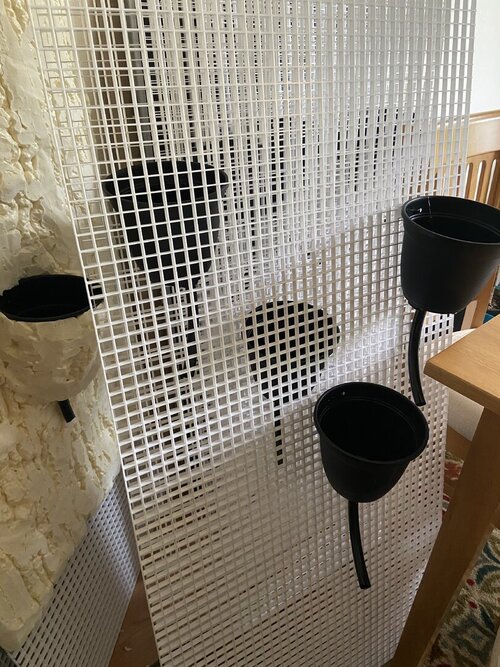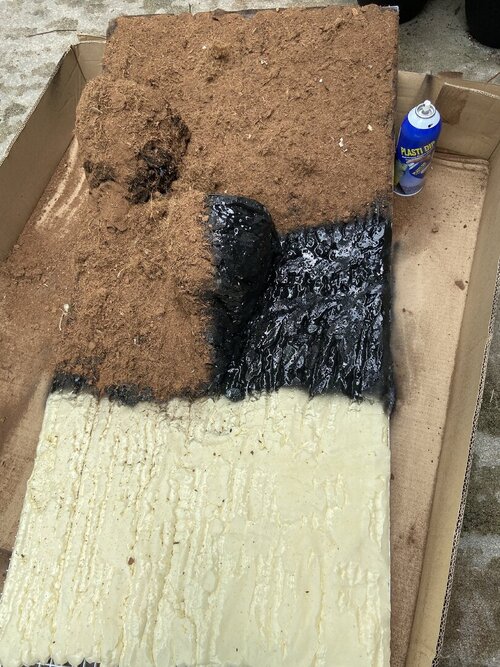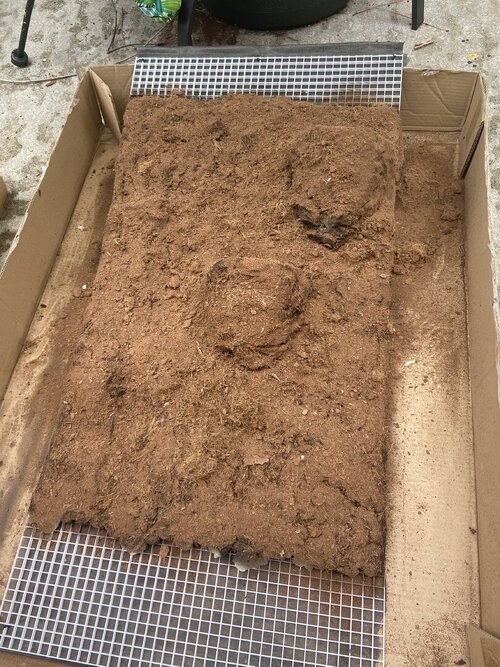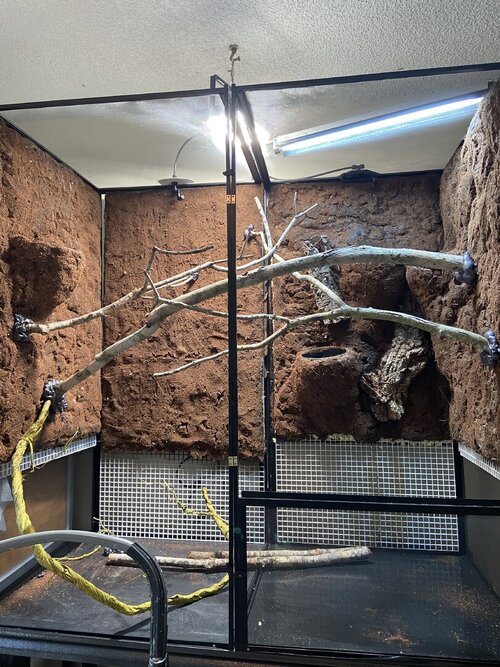chamimom
Member
If using a glass or other watertight container, you’ll need to create a way to remove the excess drainage from the drainage layer. Most usually use a piece of pvc piping notched at one end that is placed down to the very bottom and extends thru the substrate layers and is capped. When needing to remove excess drainage, you can use a little siphon pump or a wet vac. Without a way to remove excess, it will sit and become stagnant and get nasty. I like the root pouch in a screen enclosure as the pouch is breathable and gets air circulation around it. I’ve never really noticed any excess seepage, but that’s where the substrate tray comes in to contain it. Plastic won’t have that permeability so you’d need to create the pvc drainage system.
Root pouch with sides folded down and drainage layer placed.
View attachment 322309
Landscape fabric to separate layers.
View attachment 322310
Soil substrate mix added (organic soil, play sand, coco coir, etc)
View attachment 322311
Almost forgot the horticultural charcoal.
View attachment 322312
Added plants.
View attachment 322313
Added chameleon.
View attachment 322314
Added clean up crew (isopods and springtails), leaf litter and Chuck of cork for cuc to hide under.
View attachment 322315
Finished prod








